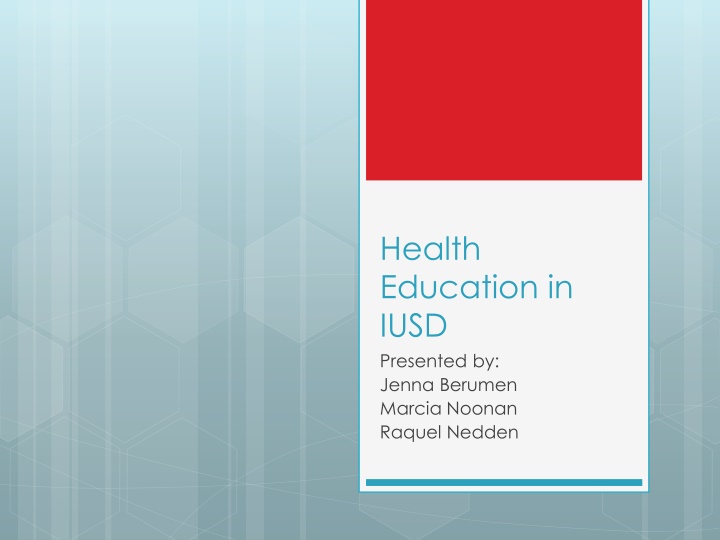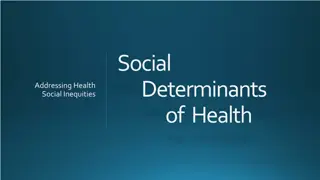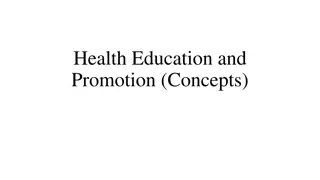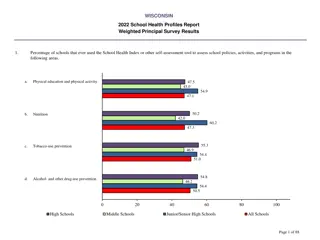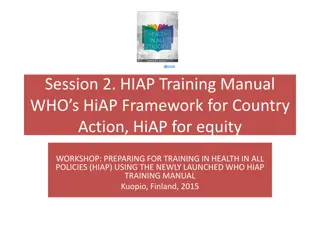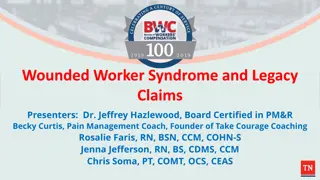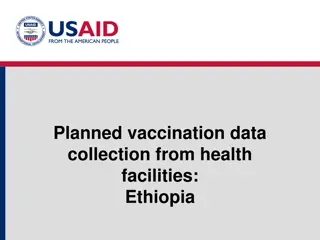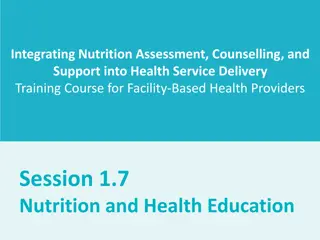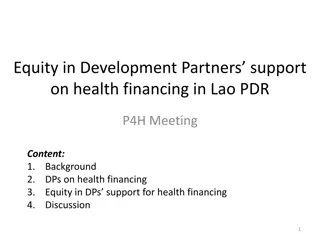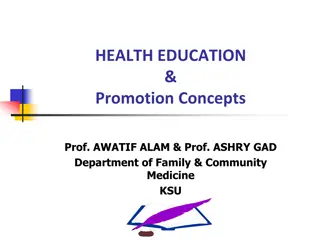Health Education in IUSD Presented by Jenna Berumen
The health education curriculum in IUSD covers topics such as safety, body systems, nutrition, social and community health, emotional health, growth and development, substance abuse prevention, illness prevention, environmental and consumer health, and fitness. The program includes The Great Body Shop, which aligns with national and state health education standards and incorporates ELA standards. The curriculum is implemented in elementary and middle schools through magazine formats and specific courses, with textbooks used at different levels. High school students are required to take courses in nutrition, physical activity, growth, development, sexual health, injury prevention, safety, alcohol, tobacco, drugs, mental health, and personal and community health. Implementation includes trimester courses, booster lessons, and blended learning options.
Download Presentation

Please find below an Image/Link to download the presentation.
The content on the website is provided AS IS for your information and personal use only. It may not be sold, licensed, or shared on other websites without obtaining consent from the author.If you encounter any issues during the download, it is possible that the publisher has removed the file from their server.
You are allowed to download the files provided on this website for personal or commercial use, subject to the condition that they are used lawfully. All files are the property of their respective owners.
The content on the website is provided AS IS for your information and personal use only. It may not be sold, licensed, or shared on other websites without obtaining consent from the author.
E N D
Presentation Transcript
Health Education in IUSD Presented by: Jenna Berumen Marcia Noonan Raquel Nedden
Elementary Curriculum Safety Body Systems Nutrition Social & Community Health Emotional Health Growth & Development Substance Abuse Prevention Illness Prevention Environmental & Consumer Health Fitness
The Great Body Shop Meets national & state health education standards ELA standards embedded in each lesson Research-based and proven to influence and change behavior
Implementation Magazine format Ten units of study (one per month) Each unit has four lessons (one per week) Student editions are sent home after use in the classroom Parent bulletins are sent home monthly
Middle School Curriculum Personal Health Nutrition Injury & Violence Prevention Individual Growth & Development Family Living Chronic & Communicable Diseases Substance Abuse Prevention
Implementation One trimester course taught in seventh grade Three booster lessons for substance abuse prevention taught in eighth grade science
High School Curriculum Nutrition & Physical Activity Growth, Development and Sexual Health Injury Prevention & Safety Alcohol, Tobacco and Other Drugs Mental, Emotional, and Social Health Personal and Community Health
Implementation All high school students are required to take the course, ideally in grade 10 18 week semester course 6 week summer school course Blended learning course (to replace former online hybrid course)
Online Hybrid Course Launched in summer 2013 Utilized a pre-packaged online course from E2020 with IUSD created components including guest speakers, performance tasks, discussion boards Designed to incorporate face to face and online engagement with the teacher and other students
Blended Learning Course The new blended learning health course is expected to launch summer, 2015. The course is being developed internally by our own IUSD professionals. The course will have both online modules and in-person activities, including guest speakers, discussions, and collaborative projects. Readings are aligned to the Glencoe Health, 2007 (eBook edition), with 6 units of study, covering the critical components of health education. Students will take an in-person final exam. The goal is to align the learning experience as much as possible to the classroom course.
High School Health PLC Multiple opportunities for cross district collaboration over the course of the past few years with a focus on Alignment of instruction across course designs Identification of critical areas of instruction Creation of a common, cumulative final exam to be utilized in all course designs
Committees In keeping with the spirit of IUSD, we have had two committees through which we have reached out to the community for input and direction in the area of health: The Health Advisory Committee The Medical Advisory Board
Health Advisory Committee Established in 1996 Five Board appointed members Charged with the review of sensitive topic materials (family life/sex education) and making recommendations to the Board for approval Convened as needed when sensitive topic materials are brought forward from school staff Anticipated review of sensitive topic materials in the newly developed blended learning program summer of 2015
Broadened Responsibility Based upon the narrow focus of the current Health Advisory Committee, staff is recommending broadening the scope of this committee to encompass a K-12 health focus while transferring the oversight to Guidance Resources for review of curricular and instructional needs.
Medical Advisory Board (MAB) Established in 2006 Consists of 16 invited physicians, 13 IUSD School Nurses, 6 District Administrators, and 2 Board members Charged with promoting mutual respect and interaction between the school community and the health care community to encourage and secure healthy lives for our students Convenes three times a year and as needed
Need for MAB Advances in medicine = increasing population of students with complex medical issues 13,875 students are identified with significant medical conditions (over 40% of our enrollment) Developed through the concerns of nurses and the willingness and enthusiasm of Dr. Lin, Board Chairman
Outcomes from MAB There have been many positive outcomes from this collaboration, a few of them are: Pre-participation Physical process Developing a District anaphylaxis statement Implementation of the Epi-pen program Review and revision of several health forms Professional educational opportunities Development of strong collaborative relationship with the physicians in our community Expanded resource and referral network
Dr. Lin summed up the importance of the Medical Advisory Board when he said, Because this group is united in doing what is best and safest for students, the MAB is an indispensable component of district services to children.
